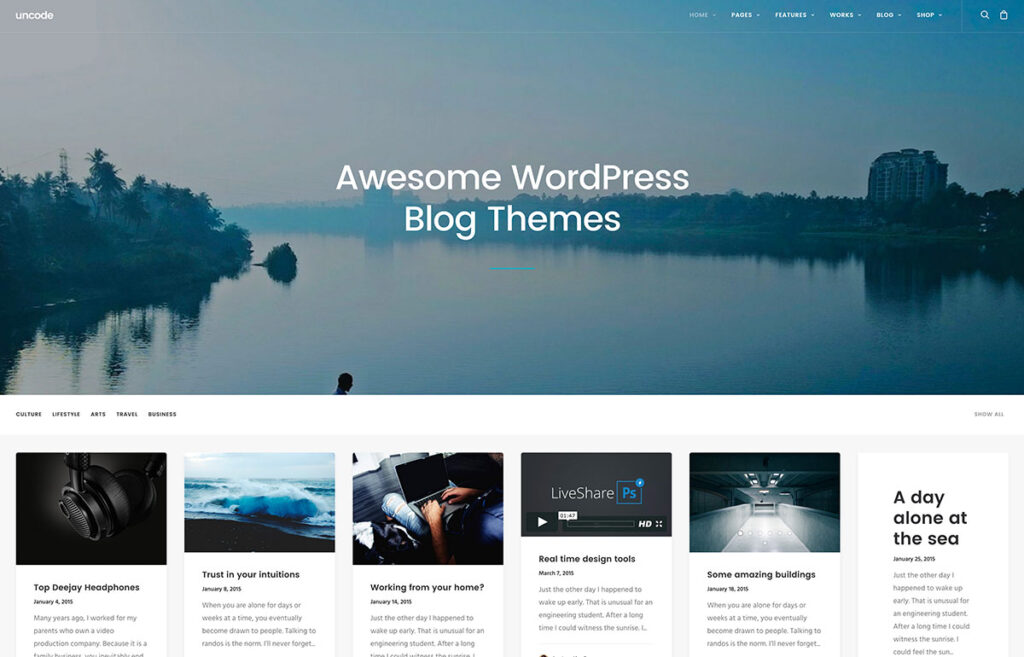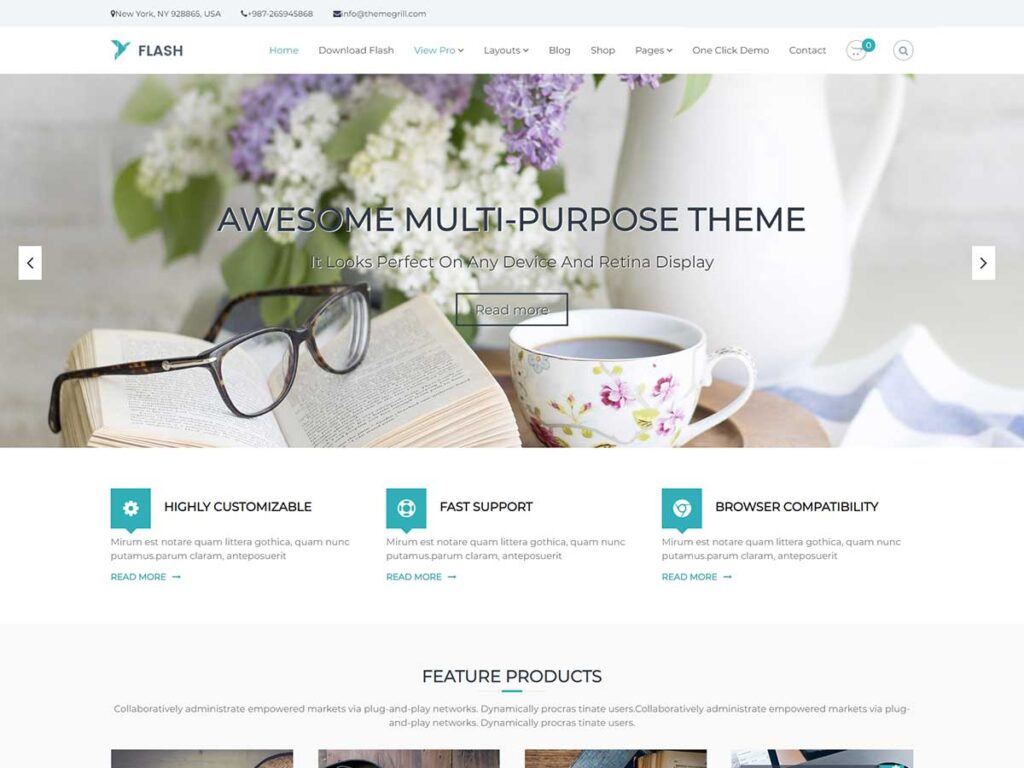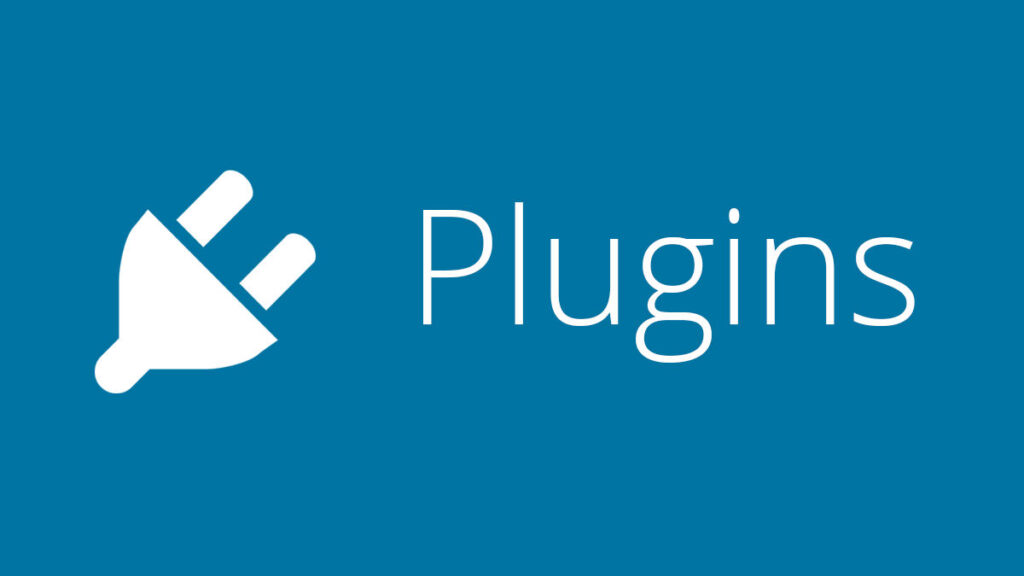We can see that WordPress is the most popular CMS in this day and age. By taking a look at a majority of reports and studies, you will see that around 35% of sites in the world use it. It’s needless to say that it became so popular because of its many virtues like flexibility, user and media management, and publishing features. If you have at least some knowledge about this CMS, you probably know that this concept offers its users a chance to use some of the many different themes placed in front of them.
What many people don’t understand is that choosing these can be quite hard sometimes. There are a couple of reasons why this decision might be hard, but two of them are the most important ones. The first one is related to people who don’t have any kind of experience and simply don’t know what they need. The second one is referring to the fact that there are countless differences to choose from. With that in mind, we would like to provide you with a couple of tips that can help you make this decision.
1. Less is More

Since there are so many of these to choose from, you can see that there are a lot of different color patterns, animated elements, layouts, and customization options. Sure, it could look that your site needs all of these elements. However, you can be sure that you will not need a high percentage of them. Instead of looking for more of them, take a look at those that can provide you with more benefits.
That means that you will need to remove some of these elements from your focus. Just think about that, your visitors wouldn’t like to be overwhelmed with all of these when they visit your site. They are looking towards quick solutions and information. Therefore, choose one that will not be too complicated and that will serve your needs most efficiently. If you would like to take a look at some themes, be sure to check out https://www.templatemonster.com/wordpress-themes.php.
2. List of Features You Need
Before you are ready to select a theme for your site, you need to come up with a list of features you will need to maximize your needs and preferences. That way you will be able to recognize what are those who are essential and those who are not needed. Thankfully, this can be done relatively easily by using a feature called WordPress Filter.
By doing that, you can narrow down choices only to those who are essential. How can you determine these? It is important to have at least a basic idea about the design you would want to include in your site. The whole process becomes much easier when you are aware of all the factors you want to include. So, be sure to compile a list of the features essential for your idea before you make any decision. Another thing that you need to keep in mind when choosing is for which niche do you need it, there is a great difference if you need WordPress themes for SAAS websites or you want to use it on your beauty blog.
3. Browser Compatibility

Without any doubt, you can presume that your users will use many different browsers. If you know that, there is absolutely no reason why you should opt for a theme that doesn’t work with some of the most popular ones. Otherwise, the website is at risk of not being well-matched with a certain browser, which ultimately means that a certain visitor will not be able to access your content properly. If you have an e-commerce site, it means that you have lost a potential customer.
That’s why it is vital to contemplate using a theme that can be opened on all of the most popular browsers like Chrome, Internet Explorer, and Firefox. It is interesting to see that developers responsible for these themes point out what browsers are best to use their products for. Even when there is no information like this, you can perform a simple task by testing a there on all of these browsers.
4. SEO Friendliness
What many people don’t understand is that choosing a proper theme plays a pivotal role in a website’s SEO friendliness. We can see that even quality design can generate some poorly written HTML codes. Therefore, it can harm the site’s SEO. If a site owner doesn’t have the required knowledge from this field, understanding these codes can be difficult to recognize.
Thankfully, you can find the information provided by developers of these themes about just how their creations are adjusted for SEO. If not, you’ll be happy to know that some tools can provide the necessary help to those in need of this knowledge. Just Google them up and we are sure that coming across them will not be as hard.
5. Compatibility with Plugins

Last but not least, we would like to talk about how important it is to include a theme compatible with all the most important plugins. Since we are talking about open-source technology, developers all over the world create effective plugins that offer sites a chance to enhance some of their processes. These plugins can be categorized into two main groups. The first category includes those who are essential for a site. It means that they need to be a part of every website.
The second category consists of those who are not essential. Therefore, not all WordPress-backed sites need to have them as a part of their arsenal. So, it means that the particular theme needs to be compatible with those plugins. It needs to be said that determining this compatibility can be somewhat harder than other processes. But, by setting proper filters, you will be able to come up with the best solutions in no time.
In Conclusion
As we’ve already said, choosing a perfect WordPress theme for your page requires quite an effort on the behalf of the website owner. To make this effort as effective as possible, a certain level of knowledge is needed. Here, we’ve provided you, our readers, with some of the most significant ones you should pay attention to. We are sure you will find them useful.
